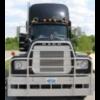-
Posts
276 -
Joined
-
Last visited
-
Days Won
2

convoyduel replied to farmer 300's topic in Modern Mack Truck General Discussion

convoyduel replied to farmer 300's topic in Modern Mack Truck General Discussion

convoyduel replied to farmer 300's topic in Modern Mack Truck General Discussion

convoyduel replied to cfesting's topic in Modern Mack Truck General Discussion

convoyduel replied to fifth wheel's topic in Antique and Classic Mack Trucks General Discussion

convoyduel replied to vision386's topic in Antique and Classic Mack Trucks General Discussion

convoyduel replied to leversole's topic in Antique and Classic Mack Trucks General Discussion

convoyduel replied to convoyduel's topic in Fire Apparatus
I received your money in the mail yesterday evening. Package is ready to go out tomorrow morning. Wish me luck!
Dan
Rick,
It's already sold. I can't remove the post because of the changeover in Classifieds.
Dan
BigMackTrucks.com is a support forum for antique, classic and modern Mack Trucks! The forum is owned and maintained by Watt's Truck Center, Inc. an independent, full service Mack dealer. The forums are not affiliated with Mack Trucks, Inc.
Thank you for your support!